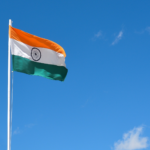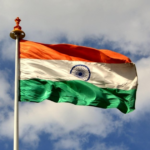The Tiranga is the national flag of India, holds a deep symbolic meaning that embodies the essence of the nation’s identity, unity, and freedom. It serves as a powerful representation of the values and struggles of the Indian people, reflecting the country’s vibrant culture, rich history, and unwavering spirit of independence. This three-colored flag, known as the “Tiranga,” stands as a testament to the collective effort of millions who fought for India’s freedom, and today, it continues to inspire pride and patriotism among Indians across the globe.
The journey of the Indian flag began long before the nation gained independence. The design of the Tiranga was adopted in its current form on July 22, 1947, by the Constituent Assembly of India, just weeks before India became a sovereign nation on August 15, 1947. However, the evolution of the flag dates back to the early 20th century.




The Indian flag, affectionately known as the Tiranga or Tricolor, is a powerful emblem of unity, pride, and the vibrant diversity of India. It consists of three horizontal stripes, each carrying profound meaning, with a central emblem that symbolizes progress and virtue.
At the top, the saffron stripe represents courage, sacrifice, and the spirit of renunciation, reflecting India’s dedication to bravery and selflessness. The middle white stripe signifies purity, truth, and peace, underscoring the nation’s commitment to harmony and integrity. At the base, the green stripe symbolizes faith, fertility, and prosperity, embodying the country’s growth and vitality.
At the center of the flag lies the Ashoka Chakra, a navy blue wheel with 24 spokes, set against the white stripe. Inspired by the Lion Capital of Ashoka, this wheel represents the eternal cycle of law, progress, and virtues. Each spoke signifies a unique value, while the wheel itself emphasizes movement, continuity, and advancement. The navy blue hue of the Ashoka Chakra stands out as a defining feature of the Tiranga.
The current design of the flag was officially adopted on July 22, 1947, just before India achieved independence. Its colors and symbols encapsulate the nation’s core values of democracy, secularism, and unity in diversity.
Displaying the Tiranga is an act of profound national pride, symbolizing India’s rich heritage and its aspirations for the future. Its design and vibrant colors remain deeply ingrained in the hearts of millions, representing the nation’s journey toward harmony, progress, and shared prosperity.